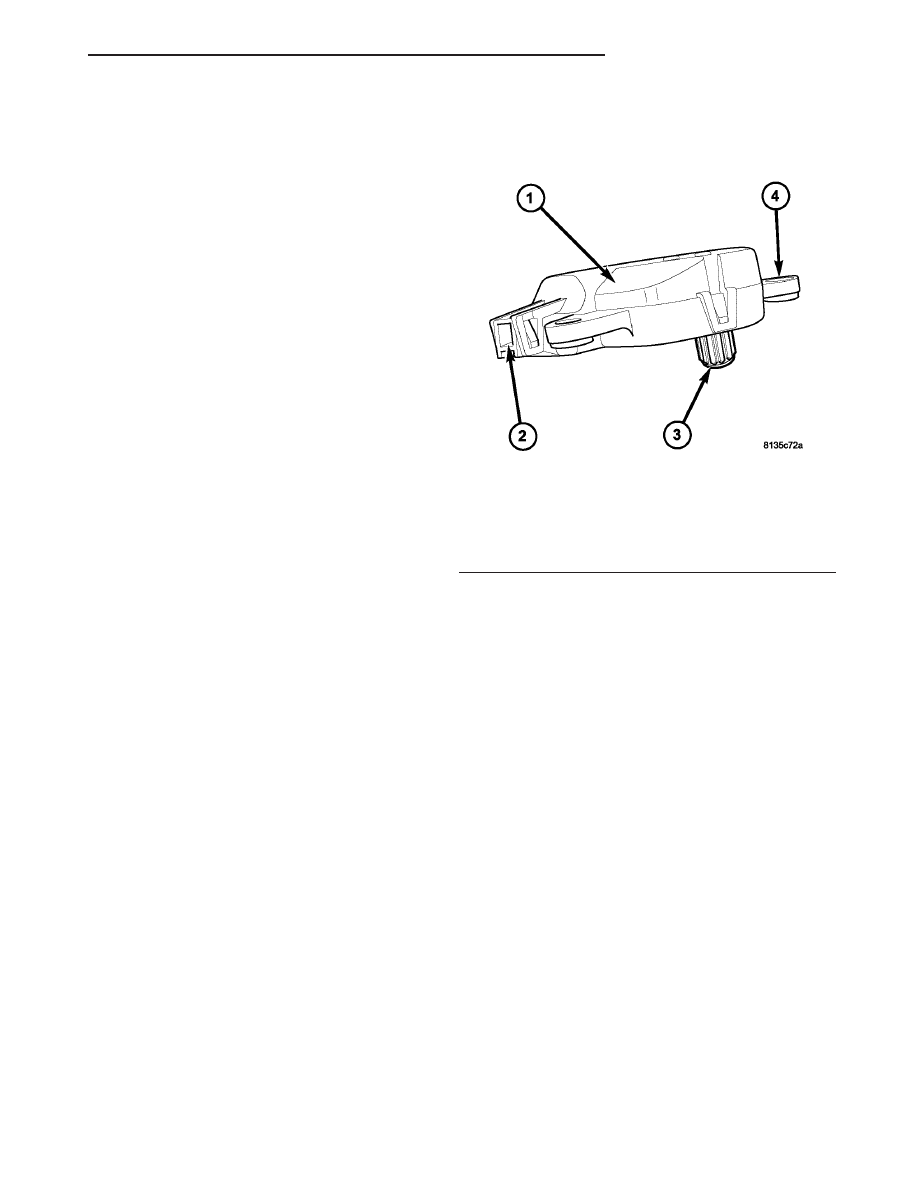Chrysler Pacifica. Manual - part 888

OPERATION
The dual infrared temperature sensors provide
independent measurement inputs to the automatic
temperature control (ATC) A/C-heater control module
that indicates the surface temperature of the driver
seat and front seat passenger seat occupants. By
using a surface temperature measurement, rather
than an air temperature measurement, the ATC sys-
tem is able to adjust itself to the comfort level as per-
ceived by the occupant. This allows the system to
detect and compensate for other ambient conditions
affecting comfort levels, such as solar heat gain or
evaporative heat loss. The ATC system logic responds
to the infrared sensor inputs by calculating and
adjusting the air flow temperature and air flow rate
needed to properly obtain and maintain the individ-
ually selected comfort level temperatures of both the
driver and passenger seat occupants.
The ATC A/C-heater control module continually
monitors the infrared sensor circuits, and will store a
diagnostic trouble code (DTC) for any problem it
detects. The infrared temperature sensor is diag-
nosed using a DRBIII
t scan tool. Refer to Body Diag-
nostic Procedures.
The
infrared
sensors
cannot
be
adjusted
or
repaired and, if faulty or damaged, the A/C-heater
control must be replaced.
MODE DOOR ACTUATOR
DESCRIPTION
The mode door actuator for the heating-A/C system
is a reversible, 12-volt Direct Current (DC), servo
motor (Fig. 23). The single mode door actuator is
located on the driver side end of the HVAC air dis-
tribution housing, close to the top of the housing. The
mode door actuator is mechanically connected to the
mode-air doors.
The mode door actuator is interchangeable with
the actuators for the blend-air doors and the recircu-
lation-air door. Each actuator is contained within an
identical black molded plastic housing with an inte-
gral wire connector receptacle. Each actuator also
has an identical output shaft with splines that con-
nects it to its respective door linkage and two inte-
gral mounting tabs that allow the actuator to be
secured to the HVAC housing. The mode door actua-
tor does not require mechanical indexing to the
mode-air doors, as it is electronically calibrated by
the A/C-heater control.
The A/C-heater control must be recalibrated each
time an actuator motor is replaced (Refer to 24 -
HEATING & AIR CONDITIONING/CONTROLS -
FRONT/A/C
HEATER
CONTROL
-
STANDARD
PROCEDURE -A/C-HEATER CONTROL CALIBRA-
TION).
OPERATION
The mode door actuator is connected to the A/C-
heater control through the vehicle electrical system
by a dedicated two-wire lead and connector of the
HVAC wire harness. The mode door actuator can
move the mode-air doors in two directions. When the
A/C-heater control pulls the voltage on one side of
the motor connection high and the other connection
low, the mode-air doors will move in one direction.
When the A/C-heater control reverses the polarity of
the voltage to the motor, the mode-air doors move in
the opposite direction.
When the A/C-heater control makes the voltage to
both connections high or both connections low, the
mode-air doors stop and will not move.
The A/C-heater control uses a feedback signal posi-
tioning system to monitor the operation and relative
position of the mode door actuator and the mode-air
doors. The A/C-heater control learns the mode-air
doors stop positions during the calibration procedure
and will store a diagnostic trouble code (DTC) for any
problems it detects in the mode door actuator cir-
cuits.
The mode door actuator is diagnosed using a
DRBIII
t scan tool. Refer to 9 - Engine Electrical
Diagnostics for more information.
The mode door actuator cannot be adjusted or
repaired and, if faulty or damaged, it must be
replaced.
Fig. 23 Mode Door Actuator
1 - ACTUATOR MOTOR
2 - WIRE CONNECTOR RECEPTACLE
3 - OUTPUT SHAFT
4 - MOUNTING TAB (2)
CS
CONTROLS - FRONT
24 - 29
INFRARED TEMPERATURE SENSOR (Continued)